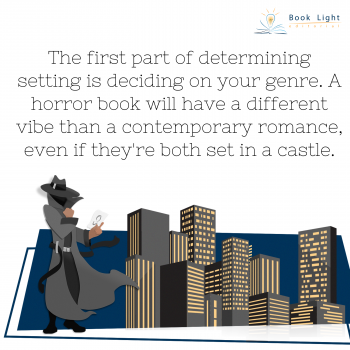Hey, everyone! In June, our topic was “Where in the World: Let’s Talk Settings!” This was such a fun topic to delve into, since there are so many facets of worldbuilding that make your settings come to life. Everything from weather to political climate should be considered when describing your physical locations. Crafting a great one takes a lot of finesse, so let’s delve into the tips we discussed in June!
The greatest thing to avoid in regards to setting is the White Room Syndrome: a writing faux pas, where your characters might as well be in a white room, for all that the setting is described. To avoid that, we recommend you include:
- The five senses: taste, touch, smell, sound, and sight. Adding sentences that utilize a character’s senses helps expand a world effortlessly, and make a place feel more real.
- Descriptions based in your genre. If you’re writing horror, you’ll describe an old castle very differently than if you were writing romance. Always keep that inflection in mind!
- Hints of the time of year, and weather patterns. For example, is there a mysterious snowstorm that ravages your MC’s town, even though it’s summer? Answering those questions can lead you to a great plot.
It’s also important to remember that settings can be atmospheric, sometimes a character in and of itself. For example, if an ancient magic offers the key to your MC’s quest, how would that area be described differently? How would the histories and cultures of your world change the physical appearance of that location?
Setting is arguably one of the most important avenues of writing—a truly rich setting can ground readers instantly, and build intrigue before your characters ever enter a room. Use the unanswered questions surrounding the setting to drive your plot forward!




We shared more tips on setting over the course of June, so check them out on Twitter (@FromCarly) or Instagram (@BookLightEditorial)!
Next month’s theme is Diving Deep with Characters. Tune into Instagram and Twitter for helpful tips on writing characters that feel real. See you in July!

